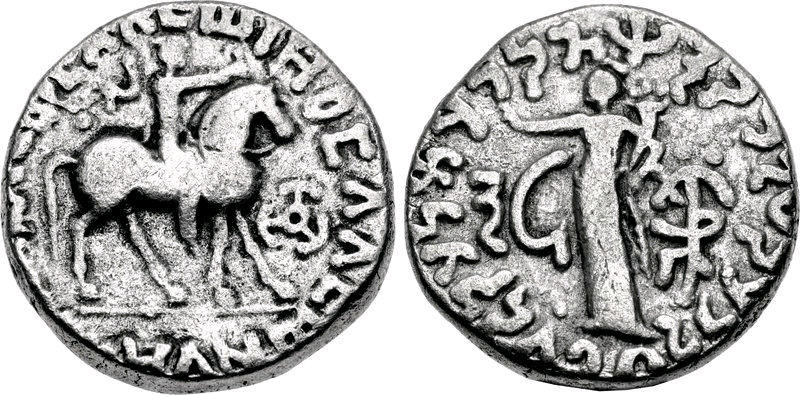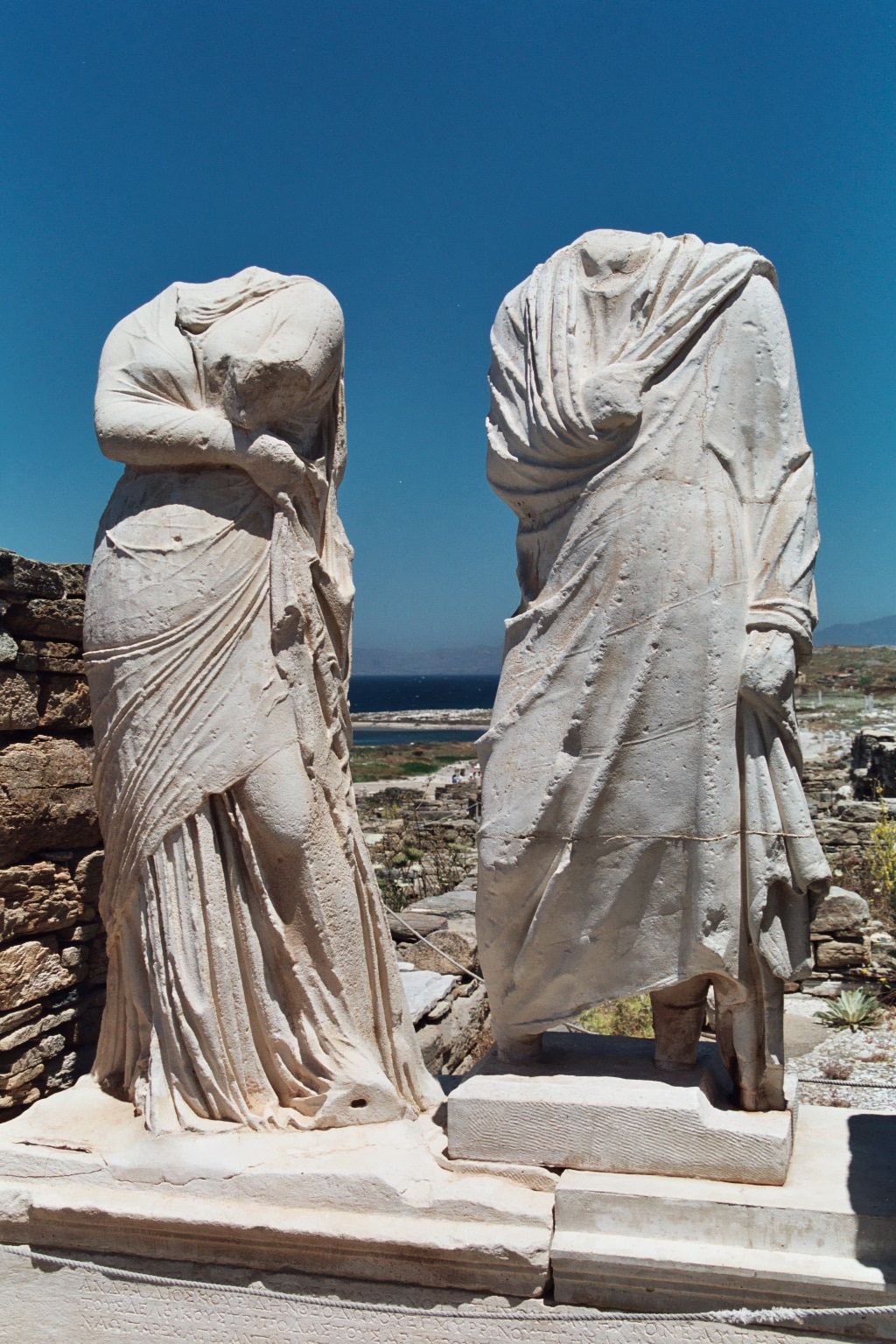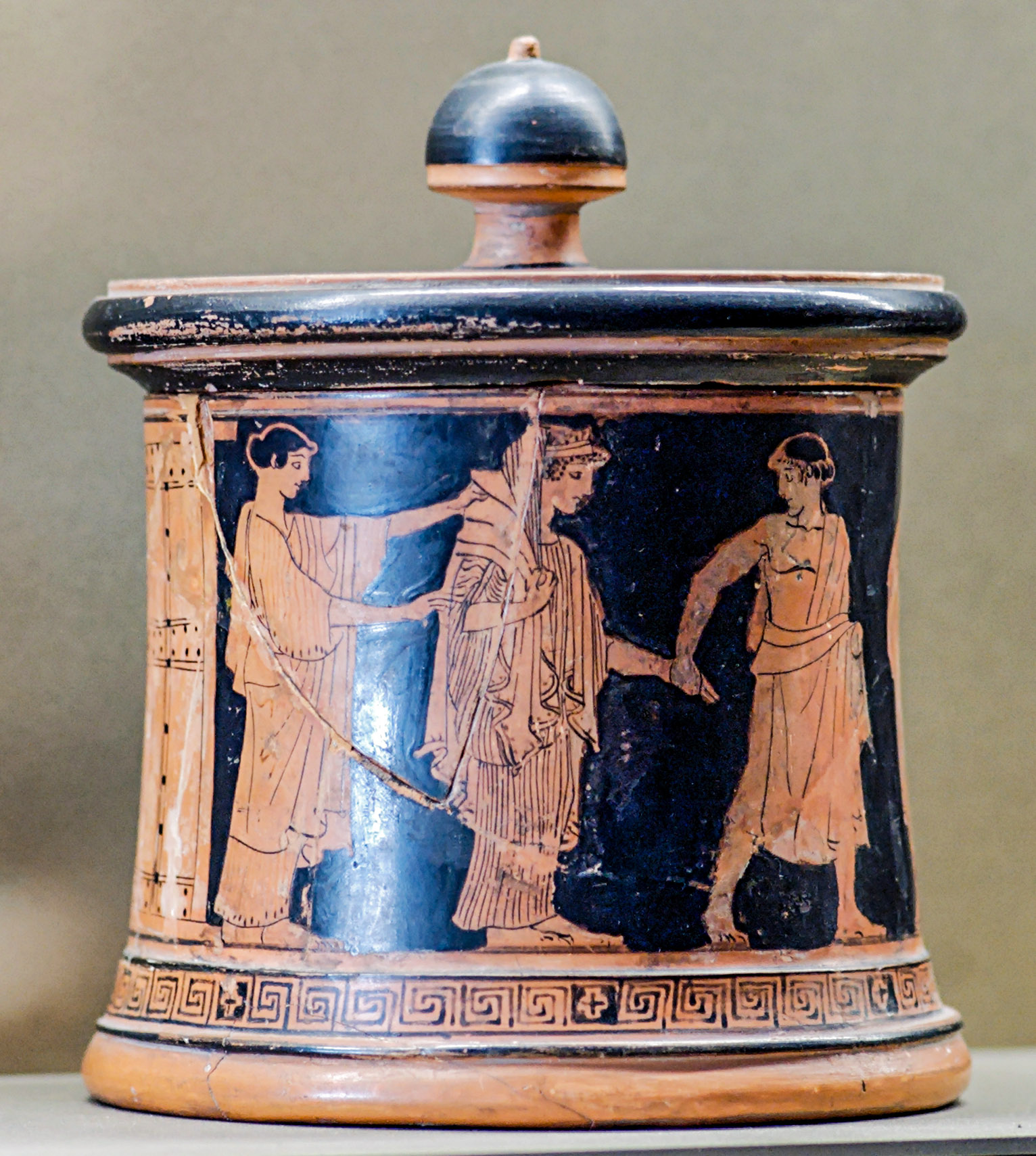|
Bimaran Casket
The Bimaran casket or Bimaran reliquary is a small gold reliquary for Buddhist relics that was found inside the stupa no.2 at Bimaran, near Jalalabad in eastern Afghanistan. Discovery When it was found by the archaeologist Charles Masson during his work in Afghanistan between 1833 and 1838, the casket contained coins of the Indo-Scythian king Azes II, though recent research by Senior indicates Azes II never existed and finds attributed to his reign probably should be reassigned to Azes I. The most recent research however (2015) attributes the coins to Indo-Scythian king Kharahostes or his son Mujatria, who minted posthumous issues in the name of Azes. The Bimaran reliquary is sometimes dated, based on coinage analysis, to 0–15 CE ( Fussman), more generally to 50–60 CE (British Museum), and sometimes much later (2nd century CE), based on artistic assumptions only. It is currently in the collections of the British Museum. The dating of this unique piece of art has a strong bea ... [...More Info...] [...Related Items...] OR: [Wikipedia] [Google] [Baidu] |
Kharahostes
Kharahostes or Kharaosta (Greek: , (epigraphic); Kharosthi: , , , ;) was an Indo-Scythian ruler (probably a satrap) in the northern Indian subcontinent around 10 BCE – 10 CE. He is known from his coins, often in the name of Azes II, and possibly from an inscription on the Mathura lion capital, although another satrap Kharaostes has been discovered in Mathura. He was probably a successor of Azes II. Epigraphical evidence from inscribed reliquaries show for certain that he was already "''Yabgu''-King", when the Indravarman Silver Reliquary was dedicated, which is itself positioned with certainty before the 5-6 CE Bajaur casket. There is some dispute however about the exact meaning of ''Yabgu''-King. For Richard Salomon, ''Yabgu'' means "tribal chief", in the manner of the Kushans, suggesting that Kharahostes was already fully king by the end of the 1st century BCE, supporting a 10 BCE- 10 CE date for his reign. For Joe Cribb, this is a misspelling by a careless scribe, ... [...More Info...] [...Related Items...] OR: [Wikipedia] [Google] [Baidu] |
Greco-Roman
The Greco-Roman civilization (; also Greco-Roman culture; spelled Graeco-Roman in the Commonwealth), as understood by modern scholars and writers, includes the geographical regions and countries that culturally—and so historically—were directly and intimately influenced by the language, culture, government and religion of the Greeks and Romans. A better-known term is classical civilization. In exact terms the area refers to the "Mediterranean world", the extensive tracts of land centered on the Mediterranean and Black Sea Basins, the "swimming pool and spa" of the Greeks and the Romans, in which those peoples' cultural perceptions, ideas, and sensitivities became dominant in classical antiquity. That process was aided by the universal adoption of Greek as the language of intellectual culture and commerce in the Eastern Mediterranean and of Latin as the language of public administration and of forensic advocacy, especially in the Western Mediterranean. Greek and Latin w ... [...More Info...] [...Related Items...] OR: [Wikipedia] [Google] [Baidu] |
Moustache
A moustache (; en-US, mustache, ) is a strip of facial hair grown above the upper lip. Moustaches have been worn in various styles throughout history. Etymology The word "moustache" is French, and is derived from the Italian ''mustaccio'' (14th century), dialectal ''mostaccio'' (16th century), from Medieval Latin ''mustacchium'' (eighth century), Medieval Greek μουστάκιον (''moustakion''), attested in the ninth century, which ultimately originates as a diminutive of Hellenistic Greek μύσταξ (''mustax'', ''mustak-''), meaning "upper lip" or "facial hair", probably derived from Hellenistic Greek μύλλον (''mullon''), "lip". An individual wearing a moustache is said to be "moustached" or "moustachioed" (the latter often referring to a particularly large or bushy moustache). History Research done on this subject has noticed that the prevalence of moustaches and facial hair in general rise and fall according to the saturation of the marriage market. Thus, ... [...More Info...] [...Related Items...] OR: [Wikipedia] [Google] [Baidu] |
Himation
A himation ( grc, ἱμάτιον ) was a type of clothing, a mantle or wrap worn by ancient Greek men and women from the Archaic through the Hellenistic periods (c. 750–30 BC). It was usually worn over a chiton and/or peplos, but was made of heavier drape and played the role of a cloak or shawl. When the himation was used alone, without a chiton, and served both as a chiton and as a cloak, it was called an ''achiton''. The himation was markedly less voluminous than the Roman toga. It was usually a large rectangular piece of woollen cloth. Many vase paintings depict women wearing a himation as a veil covering their faces. The himation continued into the Byzantine era as "iconographic dress" used in art and by the lower classes, worn by Christ, the Virgin Mary, and biblical figures. Wearing styles Himation is not kept in place using pins, unlike other types of Ancient Greek overgarments. When worn by men, the himation is draped over the left shoulder and wrapped around t ... [...More Info...] [...Related Items...] OR: [Wikipedia] [Google] [Baidu] |
Contrapposto
''Contrapposto'' () is an Italian term that means "counterpoise". It is used in the visual arts to describe a human figure standing with most of its weight on one foot, so that its shoulders and arms twist off-axis from the hips and legs in the axial plane. First appearing in Ancient Greece in the early 5th century BCE, contrapposto is considered a crucial development in the history of Ancient Greek art (and, by extension, Western art), as it marks the first time in Western art that the human body is used to express a psychological disposition. The style was further developed and popularized by sculptors in the Hellenistic and Imperial Roman periods, fell out of use in the Middle Ages, and was later revived during the Renaissance. Michelangelo's statue of ''David'', one of the most iconic sculptures in the world, is a famous example of contrapposto. Definition Contrapposto was historically an important sculptural development, for its appearance marks the first time in Western art ... [...More Info...] [...Related Items...] OR: [Wikipedia] [Google] [Baidu] |
Hellenistic
In Classical antiquity, the Hellenistic period covers the time in Mediterranean history after Classical Greece, between the death of Alexander the Great in 323 BC and the emergence of the Roman Empire, as signified by the Battle of Actium in 31 BC and the conquest of Ptolemaic Egypt the following year. The Ancient Greek word ''Hellas'' (, ''Hellás'') was gradually recognized as the name for Greece, from which the word ''Hellenistic'' was derived. "Hellenistic" is distinguished from "Hellenic" in that the latter refers to Greece itself, while the former encompasses all ancient territories under Greek influence, in particular the East after the conquests of Alexander the Great. After the Macedonian invasion of the Achaemenid Empire in 330 BC and its disintegration shortly after, the Hellenistic kingdoms were established throughout south-west Asia ( Seleucid Empire, Kingdom of Pergamon), north-east Africa ( Ptolemaic Kingdom) and South Asia ( Greco-Bactrian Kingdom, Indo-Gree ... [...More Info...] [...Related Items...] OR: [Wikipedia] [Google] [Baidu] |
Joe Cribb
Joe Cribb is a numismatist, specialising in Asian coinages, and in particular on coins of the Kushan Empire. His catalogues of Chinese silver currency ingots, and of ritual coins of Southeast Asia were the first detailed works on these subjects in English. With David Jongeward he published a catalogue of Kushan, Kushano-Sasanian and Kidarite Hun coins in the American Numismatic Society New York in 2015. In 2021 he was appointed Adjunct Professor of Numismatics at Hebei Normal University, China. Career Joe Cribb studied Latin, Greek and Ancient History at Queen Mary College, University of London, graduating in 1970. He became a research assistant at the Department of Coins and Medals at the British Museum. He eventually rose to be the Keeper of the Coins and Medals (2003–2010), before his retirement in 2010. His work was focused at first on the Chinese coin collection, but later expanded to other aspects of Asian coinage. [...More Info...] [...Related Items...] OR: [Wikipedia] [Google] [Baidu] |
Classical World
Classical antiquity (also the classical era, classical period or classical age) is the period of cultural history between the 8th century BC and the 5th century AD centred on the Mediterranean Sea, comprising the interlocking civilizations of ancient Greece and ancient Rome known as the Greco-Roman world. It is the period in which both Greek and Roman societies flourished and wielded huge influence throughout much of Europe, North Africa, and Western Asia. Conventionally, it is taken to begin with the earliest-recorded Epic Greek poetry of Homer (8th–7th-century BC), and continues through the emergence of Christianity (1st century AD) and the fall of the Western Roman Empire (5th-century AD). It ends with the decline of classical culture during late antiquity (250–750), a period overlapping with the Early Middle Ages (600–1000). Such a wide span of history and territory covers many disparate cultures and periods. ''Classical antiquity'' may also refer to an idealized v ... [...More Info...] [...Related Items...] OR: [Wikipedia] [Google] [Baidu] |
Pyxis (vessel)
A ''pyxis'' (, plural ''pyxides'') is a shape of vessel from the classical world, usually a cylindrical box with a separate lid. Originally mostly used by women to hold cosmetics, trinkets or jewellery, surviving ''pyxides'' are mostly Greek pottery, but especially in later periods may be in wood, metal, ivory, or other materials. The name derived from Corinthian boxes made of wood from the tree ''puksos'' (boxwood), that also came with covers. The shape of the vessel can be traced in pottery back to the Protogeometric period in Athens, however the Athenian ''pyxis'' has various shapes itself. At first, the two varieties of ''pyxis'' included the pointed and the flat-bottomed. The pointed ''pyxis'' didn't last much longer than the ninth century BCE, while the flat-bottomed continued into the late Geometric. It also continued to grow larger and more squat in proportions. The cover often depicts elaborately sculpted handles and the walls tend to be somewhat convex. During the ... [...More Info...] [...Related Items...] OR: [Wikipedia] [Google] [Baidu] |
Buddha
Siddhartha Gautama, most commonly referred to as the Buddha, was a śramaṇa, wandering ascetic and religious teacher who lived in South Asia during the 6th or 5th century BCE and founded Buddhism. According to Buddhist tradition, he was born in Lumbini, in what is now Nepal, to royal parents of the Shakya clan, but Great Renunciation, renounced his Householder (Buddhism), home life to live as a wandering ascetic ( sa, śramaṇa). After leading a life of begging, asceticism, and meditation, he attained Enlightenment in Buddhism, enlightenment at Bodh Gaya in what is now India. The Buddha thereafter wandered through the lower Indo-Gangetic Plain, teaching and building a Sangha, monastic order. He taught a Middle Way between sensual indulgence and severe asceticism, leading to Nirvana (Buddhism), Nirvana, that is, Vimutti, freedom from Avidyā (Buddhism), ignorance, Upādāna, craving, Saṃsāra (Buddhism), rebirth, and suffering. His teachings are summarized in the Noble ... [...More Info...] [...Related Items...] OR: [Wikipedia] [Google] [Baidu] |

_(30776483926).jpg)




.jpg)

.jpg)